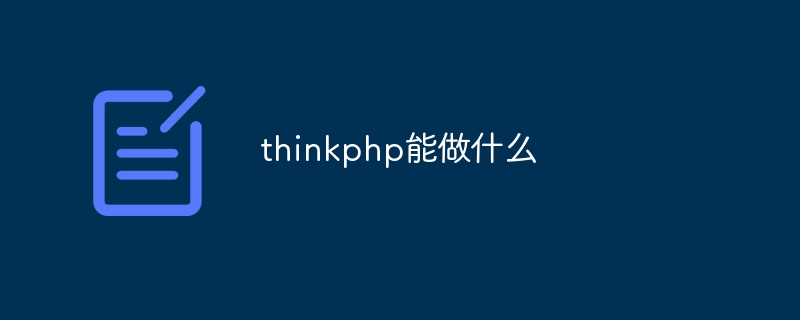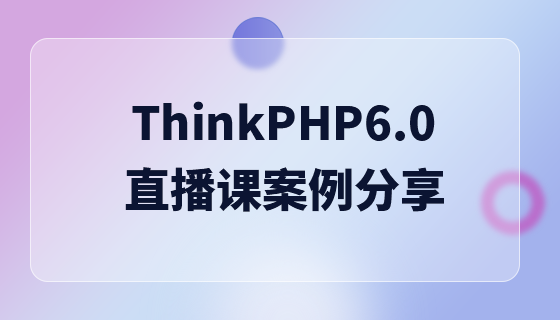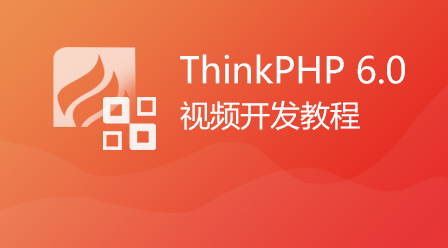ThinkPHP 是一款用于构建 Web 应用程序的 PHP 框架,它提供:MVC 架构ORM(对象关系映射)控制器和视图层中间件数据库访问表单验证分页文件上传AJAX模块化设计性能优化安全措施完善的文档社区支持

ThinkPHP 能做什么
ThinkPHP 是一款轻量级、模块化、面向对象和开源的高性能 PHP 框架,用于快速、简单地构建 Web 应用程序。它具有广泛的功能,包括:
后端特性
前端特性
立即学习“PHP免费学习笔记(深入)”;
其他特性
以上就是thinkphp能做什么的详细内容,更多请关注php中文网其它相关文章!

PHP怎么学习?PHP怎么入门?PHP在哪学?PHP怎么学才快?不用担心,这里为大家提供了PHP速学教程(入门到精通),有需要的小伙伴保存下载就能学习啦!

![ThinkPHP5实战之[教学管理系统]](https://img.php.cn/upload/course/000/000/068/6253d87459486427.png)


Copyright 2014-2025 https://www.php.cn/ All Rights Reserved | php.cn | 湘ICP备2023035733号